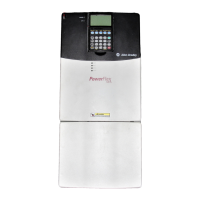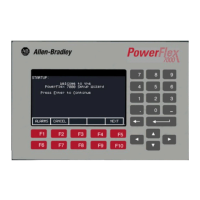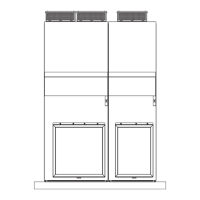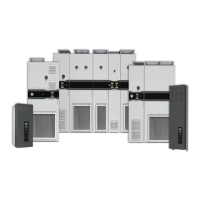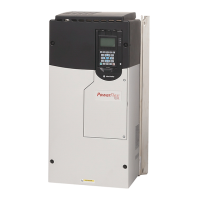2-86 Drive Overload
Drive Overload The drive thermal overload has two primary functions. The first requirement
is to make sure the drive is not damaged by abuse. The second is to perform
the first in a manor that does not degrade the performance, as long the drive
temperature and current ratings are not exceeded.
The purpose of is to protect the power structure from abuse. Any protection
for the motor and associated wiring is provided by a Motor Thermal
Overload feature.
The drive will monitor the temperature of the power module based on a
measured temperature and a thermal model of the IGBT. As the temperature
rises the drive may lower the PWM frequency to decrease the switching
losses in the IGBT. If the temperature continues to rise, the drive may
reduce current limit to try to decrease the load on the drive. If the drive
temperature becomes critical the drive will generate a fault.
If the drive is operated in a low ambient condition the drive may exceed
rated levels of current before the monitored temperature becomes critical.
To guard against this situation the drive thermal overload also includes an
inverse time algorithm. When this scheme detects operation beyond rated
levels, current limit may be reduced or a fault may be generated.
Operation
The drive thermal overload has two separate protection schemes, an overall
RMS protection based on current over time, and an IGBT junction thermal
manager based on measured power module temperature and operating
conditions. The drive may fold back current limit when either of these
methods detects a problem.
Overall RMS Protection
The overall RMS protection makes sure the current ratings of the drive are
not exceeded. The lower curve in Figure 2.18
shows the boundary of
normal-duty operation. In normal duty, the drive is rated to produce 110%
of rated current for 60 seconds, 150% of rated current for three seconds, and
165% of rated current for 100 milliseconds. The maximum value for current
limit is 150% so the limit of 165% for 100 milliseconds should never be
crossed. If the load on the drive exceeds the level of current as shown on the
upper curve, current limit may fold back to 100% of the drive rating until
the 10/90 or 5/95 duty cycle has been achieved. For example, 60 seconds at
110% will be followed by 9 minutes at 100%, and 3 seconds at 150% will
be followed by 57 seconds at 100%. With the threshold for where to take
action slightly above the rated level the drive will only fold back when drive
ratings are exceeded.
If fold back of current limit is not enabled in [Drive OL Mode], the drive
will generate a fault when operation exceeds the rated levels. This fault can
not be disabled. If current limit fold back is enabled then a fault is generated
when current limit is reduced.
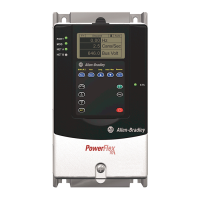
